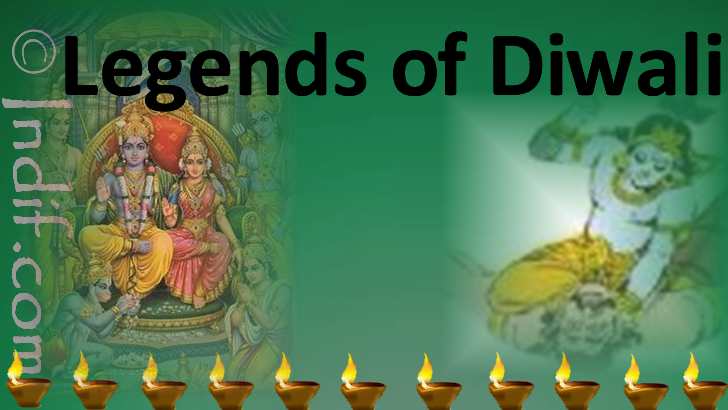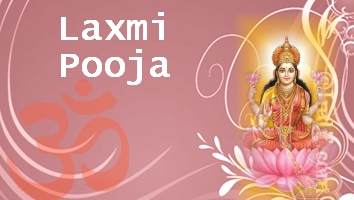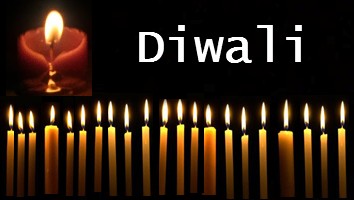Diwali, the "festival of lights" is the most important festival for Hindus around the globe. The legends behind the festival are as varied as the manner of its celebration, but common to all of them is the theme of the triumph of good over evil. Everywhere Diwali symbolizes the lifting of spiritual darkness and ushers light. In due course of time, numerous historical incidents got connected with this festival. Various legends are attributed to this festival and the reasons for celebration differ in different regions of the country.
Main Legend - The Story of Rama and Sita:
In the north, particularly in Uttar Pradesh, Punjab, Haryana, Bihar and the surrounding areas, Diwali is the day when King Rama`s coronation was celebrated in Ayodhya after his epic war with Ravana, the demon king of Lanka. Lord Rama was a great warrior King who was exiled by his father Dashratha, the King of Ayodhya, along with his wife Sita and his younger brother Lakshman, on his wife's insistence. Lord Rama returned to his Kingdom Ayodhya after 14 years of exile, in which he put an end to the demon Ravana of Lanka, who was a great Pundit, highly learned but still evil dominated his mind. After this victory of Good over Evil, Rama returned to Ayodhya. In Ayodhya, the people welcomed them by lighting rows of clay lamps. So, it is an occasion in honor of Rama's victory over Ravana; of Truth's victory over Evil.
The Story of King Bali and Vamana Avatar(the Dwarf):
The other story concerns King Bali, who was a generous ruler. But he was also very ambitious. Some of the Gods pleaded Vishnu to check King Bali's power. Vishnu came to earth in the form of a Vamana(dwarf) dressed as priest. The dwarf approached King Bali and said "You are the ruler of the three worlds: the Earth, the world above the skies and the underworld. Would you give me the space that I could cover with three strides?" King Bali laughed. Surely a dwarf could not cover much ground, thought the King, who agreed to dwarf's request. At this point, the dwarf changed into Vishnu and his three strides covered the Earth, the Skies and the whole Universe! King Bali was send to the underworld. As part of Diwali celebrations, some Hindus remember King Bali.
The Story of Narakasura:
Another legend talks about the Demon named Narakasur who had managed to acquire such awesome powers that he began to terrorize the three worlds. He was killed and defeated by Lord Krishna. As a symbol of that victory Lord Krishna smeared his forehead with the demon king's blood. Krishna returned home early morning on the day of Narakachaturdashi. The womenfolk massaged scented oil on his body and gave him a bath to wash away the demon�s blood. Since then the custom of taking an oil bath before sunrise on this day has become a traditional practice especially in Maharashtra and in the South.
The Story of Goddess Lakshmi:
On this day Mother Lakshmi emerged from the ocean of milk called the Ksheer Sagar. She brought with Her wealth and prosperity for mankind. On that day, Lakshmi Pooja was performed to honour Her and as such, every year on Diwali day, Hindus perform Her prayer and worship. The making and distribution of various sweets and total vegetarian foods are the order of the day. This practice is alive and well to this very day. Many people believe that Lakshmi, the Goddess of wealth and good fortune, visit the homes of devotees on this day. Worship of Lakshmi is performed in the evening.
Another Legend:
In rural areas, Diwali signifies Harvest Festival. Diwali which occurs at the end of a cropping season has along with the above custom, a few others that reinforce the hypothesis of its having originated as a harvest. Every harvest normally spelt prosperity. The celebration was first started in India by farmers after they reaped their harvests. They celebrated with joy and offered praises to God for granting them a good crop.



 Deepavali Katha
Deepavali Katha

 Diwali
Diwali






